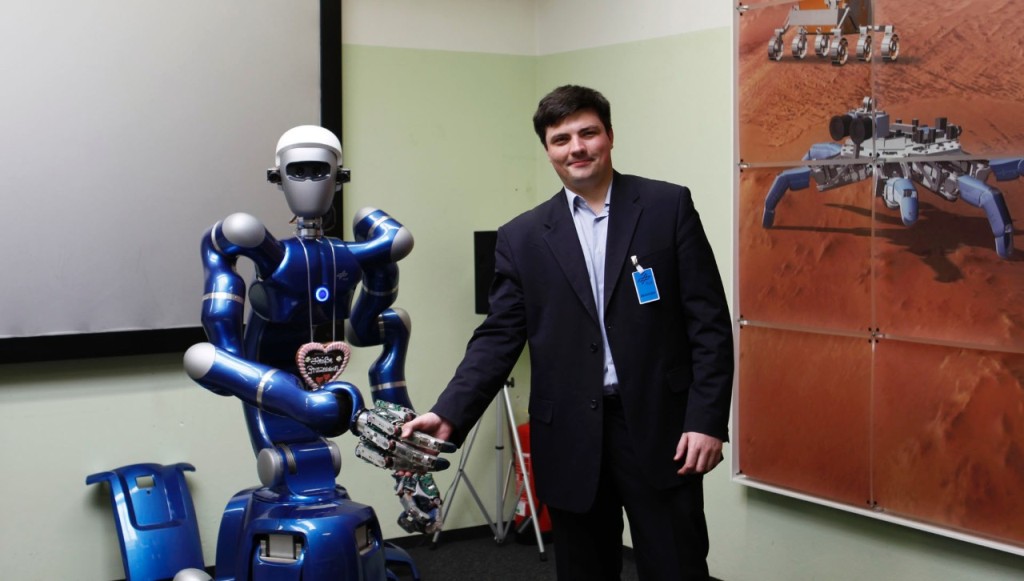
Associate Professor Vladimir Mulukha, Ph.D., Telematics Department of St. Petersburg Polytechnic University, shakes hands with the mobile humanoid “Justin,” one type of robot utilized in Ford’s space robots research project to advance connected vehicle communications.
Car conversations are usually reserved for Pixar cartoons. I imagine my own talking car would be making some rather comical complaints about the cheap gas I give him. But Ford is working to make this strange concept a reality, and for good reason.
By studying the communications of space robots… What’s that? Yes, I said ‘space robots’. But they’re the kind made by humans, not the Borg or anything. So, anyhow, these perfectly well-behaved space robots are assisting Ford simply by opening the lines of communication. Ford is listening to their conversations in order to drive car technology. But what is it about chatterbox robots that has Ford so interested?
With a three-year partnership with the telematics department of Russia’s St. Petersburgh Polytechnic University, Ford is studying robot communication to create cars that can talk to each other. “Telematics’ is the long-distance transmission of digital information. With this technology, Ford plans to reduce car accidents and even traffic congestion.
“Ford has been committed to the research and development of connected vehicle communications for more than a decade,” said Paul Mascarenas, chief technical officer and vice president, Ford research and innovation. “Our participation in this research can aid in the development of next-generation Ford driver-assist technologies. These technologies will globally benefit Ford customers, other road users and the environment.”
In a world of talking cars, emergency signals can be sent to-and-fro, from a car involved in an accident ahead to the one speeding toward it’s back-end. Areas of backed-up traffic can send signals to those headed out the door to prevent further congestion on the freeway. It adds up to faster EMS response and less hassle for all of us non-robots.
It appears we are approaching an age far beyond the capabilities of even K.I.T.T., who, poor soul, had only Hasslehoff to chat with. Soon, our cars will actually be able to read each other’s minds. Maybe they are the Borg. As Ford studies space robots, where do you think car technology will go?
Ford is analyzing the most robust and reliable global telematics networks to help reduce traffic accidents; ease congestion; and provide faster, more accurate EMS response through vehicle-to-cloud, vehicle-to-infrastructure, vehicle-to-vehicle and other communications
Partnering with Ford, students from the Telematics Department of St. Petersburg Polytechnic University and Professor Mikhail Kurochkin analyze model space rover movements. Ford is studying the communications between space robots to improve the reliability of vehicle communications and aid in the advancement of emergency communication methods.
Rain Blanken is an author who specializes in covering art, travel and the automotive industry. With three kids and a lot of road trips ahead of her, she is always excited to review the latest models and to check out classic car shows. Rain has written for The New York Times, Barnes & Noble and Running Press. She currently lives in the land of cornfields and airfields; Dayton, Ohio. See more articles by Rain.